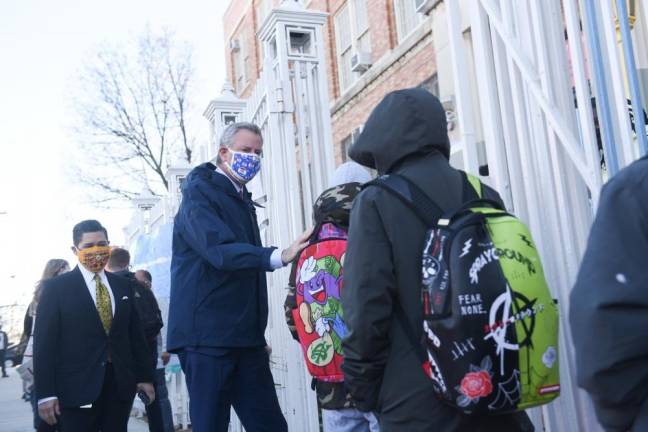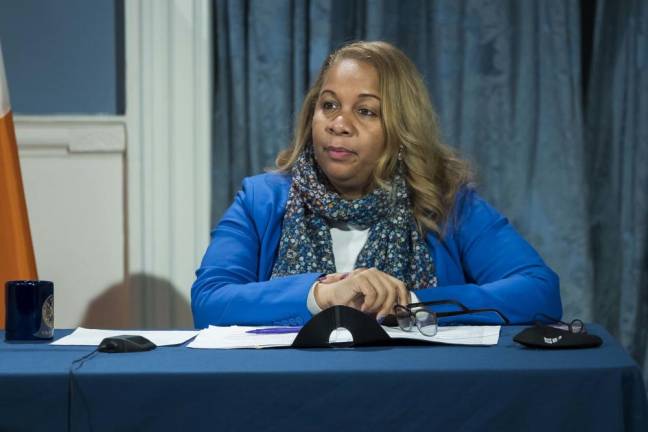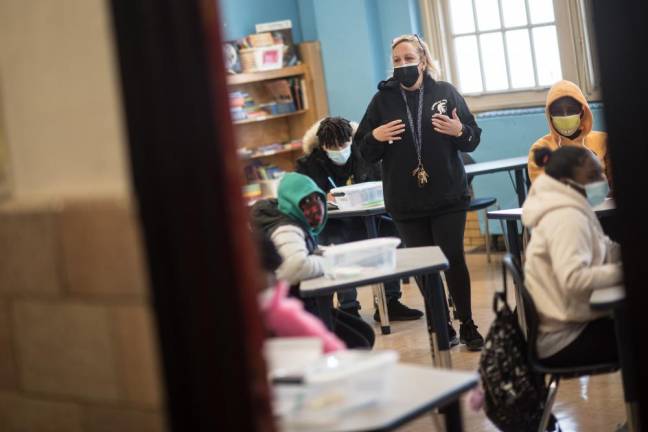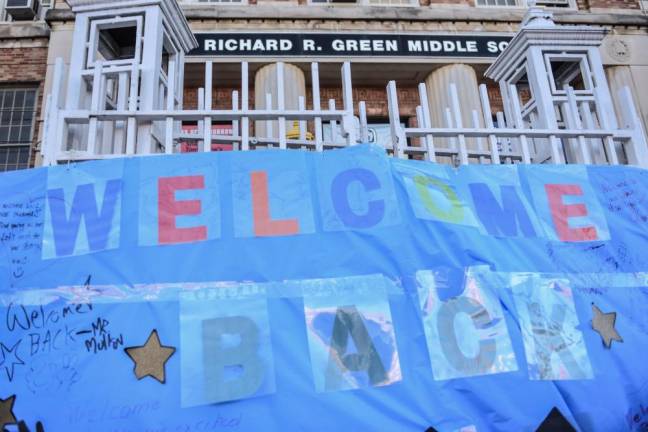For teachers and students in New York City, the last 12 months have been full of trauma, isolation and uncertainty. The shift from classroom instruction to remote learning, and eventually to a hybrid of the two, in order to adapt to the safety demands of the pandemic, was anything but seamless.
At every turn, it seems, schooling has been disrupted: whether it be positive COVID-19 cases closing classrooms or the inept delivery of tablets to students in order to facilitate remote learning. Students, teachers and parents have had to withstand it all, sometimes with little guidance from the city.
Last week, the school system was met with another major disruption: the resignation of Chancellor Richard Carranza.
Carranza’s resignation, according to various news reports, followed a disagreement with Mayor Bill de Blasio on how to approach desegregating the city’s school system, particularly when it comes to the gifted and talented programs. It’s an issue on which the two had been butting heads since Carranza’s tenure began three years ago.
The announcement was made during a joint press conference with de Blasio, Carranza, and his soon-to-be replacement, Meisha Porter, who serves as executive superintendent for the Bronx. She will be the first Black woman in the role of chancellor.
Since last March, Carranza has taken on the colossal task of shifting to remote, and then hybrid, learning while keeping the teacher’s union on board. During the press conference Friday, Carranza revealed the personal losses he’s suffered while taking on this job.
“I know the pandemic has not been easy for you, or for any New Yorker. I am ... a New Yorker who has lost 11 family and close childhood friends to this pandemic,” said Carranza. “And a New Yorker who quite frankly needs to take time to grieve.”
Porter will take the reins of the city’s Department of Education on March 15. She will be tasked with navigating the rest of what’s been an unpredictable school year with scarce classroom instruction and sporadic school closures due to COVID-19. Between Sept. 14, when schools opened for the first time, and Feb. 28, 16,281 students and teachers have tested positive for COVID-19, according to the DOE, and as a result 9,462 classrooms have closed for 10-day periods. Additionally, 665 school buildings have closed for 24-hour periods, and 1,563 buildings have closed for extended periods of time.
Currently, 613 classrooms are temporarily closed, 57 buildings are under 24-hour closures, and 18 buildings are on extended closures.
A Mother’s Worries
The closures have contributed to the disruption parents, teachers and students have had to contend with this year. With classroom instruction only a couple days per week, if that, a classroom closure can totally upend a teacher’s lesson plan for the week, as well as leave parents scrambling for childcare.
For La Keesha Taylor, a public housing activist and mother to two elementary school-aged sons on the Upper East Side, the increased reliance on remote learning has been troubling. She worries about the strain of staring at screens is having on her youngest son, who is starting to have vision problems. She also sees that he’s become angrier and more frustrated without physical and social outlets. And she sees her oldest son starting to form bad habits, and worries about his academic development.
“Everything has been like a lateral move,” said Taylor of education in general this year. “But my oldest son, he’s not making a lateral move. To me, he’s kind of going downward, whereas before I really thought maybe he would keep up.”
Before the pandemic, Taylor said, her oldest, a fourth grader, loved going to school. But she’s seen his focus and curiosity dim in the last few months.
“He’s learning how to check out,” said Taylor, noting her son has found it difficult to stay engaged during virtual instruction. “This is a crucial time; it’s not a time for him to check out and figure out how to sneak around to not do his work, and to fall out of love with school. I’m fearful.”
The DOE will have to take on the learning loss of the city’s students over the next year, and possibly several years to come to ensure students are not falling too far behind. Taylor, however, said she is taking it upon herself to ensure her children get whatever help they need to stay on track.
“I don’t want this pandemic to be the downfall of my son,” said Taylor. “I’m putting everything into my children; especially as a Black woman raising Black sons in America today. We have to put everything positive into our children.”
Smoother Online Experience
Gabrielle Utting, a high school English teacher in Manhattan, has found a bit of stability this year. From the start, her school received an exemption to teach exclusively online. In turn, Utting said it’s been a much smoother experience than last spring.
“In a time when everything’s changing so frequently, the best thing for teachers and for students has been any kind of consistency that we can provide, so that we can plan and we can support students, and they understand the expectations for them,” said Utting.
Remote instruction, she said, of course still comes with the obstacles it always has. It’s still difficult to gauge whether her students are struggling with the material when they are all on the other side of a black Zoom box on her computer.
But she said there are definite lessons she’ll take from teaching remotely, including being more flexible with her assignments. For a recent project, some students turned in movies, infographics and podcasts instead of what may have traditionally been assigned as an analytical paper.
“I found that my students are so creative and so artistic,” said Utting. “I was just completely blown away by some of the things that students came up and the mediums they used.”
As the DOE’s new leader, Porter and others may have to embrace this kind of flexibility as the city and its students recover from inequity and disruption caused by the pandemic. With middle schools returning to the classroom last week, Porter now has her eyes set on getting high school students – who have been learning remotely since November – back into the classroom before the end of the spring term.
An even greater challenge will be faced in the fall, when the city looks to get back to the classroom full time. In doing so, Porter said Friday that the DOE will expand learning opportunities and do more to address trauma and academic needs of students.
“I’m ready to hit the ground running and lead New York City schools to full recovery,” said Porter. “It won’t be easy, but clearly, I’ve never done anything easy.”
“I found that my students are so creative and so artistic. I was just completely blown away by some of the things that students came up and the mediums they used.” High school English teacher Gabrielle Utting, on what she learned from teaching remotely



